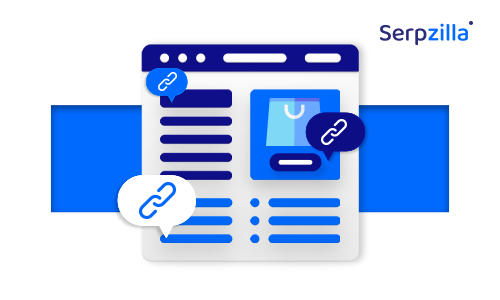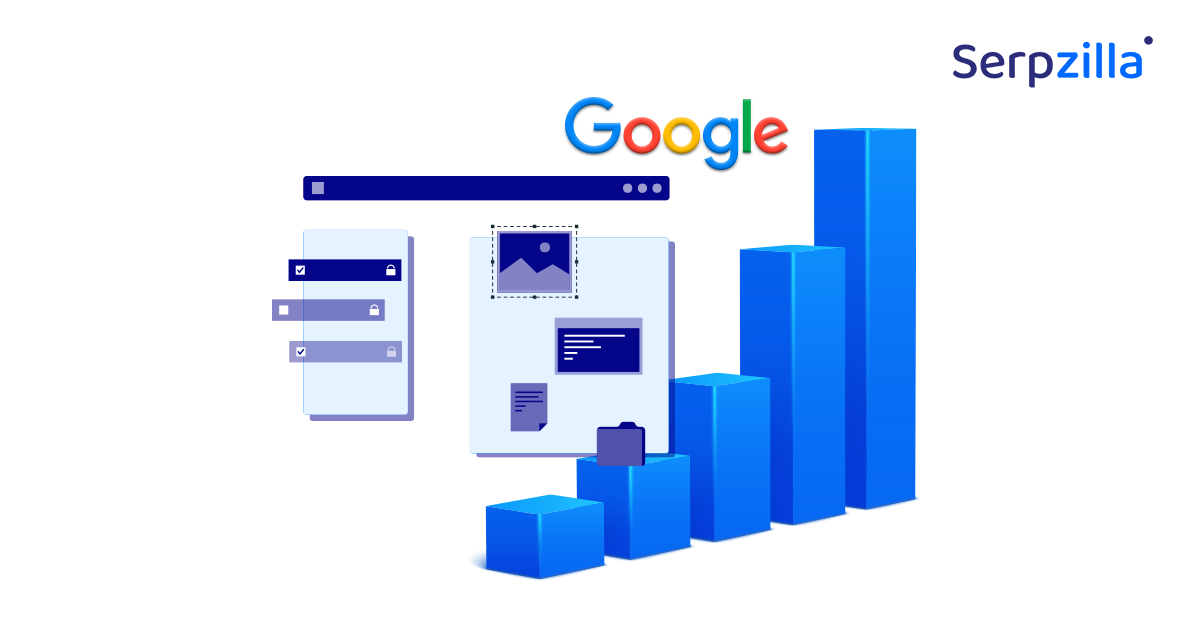Perhaps, the shortest horror story for any SEO executive or webmaster is – Google penalizing their website. One of the major reasons why this might happen is harmful backlinks.
Surely, you don’t want to be on that side of the fence! This is why, conducting a backlink audit should be your first priority.
Why Conduct a Backlink Audit?
A backlink audit is a critical aspect of your off-page SEO strategy .Without one, your website could be inundated with harmful and not organic backlinks. This ruins the website’s reputation and credibility.
This means all the efforts – time and money, that you invested in SEO, will eventually go down the drain. A backlink audit helps:
- Identify and remove harmful links
- Maintain a robust backlink profile
- Avoid Google’s manual actions
- Safeguard your website’s credibility and authority
- Maintain rank on SERPs
- Generate valuable referral traffic
- Strategize future link-building efforts
How To Conduct A Backlink Audit
To help you understand how to conduct a step-by-step backlink audit, we at Serpzilla performed a backlink audit, using Airbnb.com as an example. Explore the outlined steps, and utilize them to conduct a comprehensive backlink audit for your own website.
Step 0: Understand how to collect backlink data
To conduct a thorough backlink audit, collect complete backlink data using SEO tools that crawl the web and index backlinks. Tools like SEMrush, Ahrefs, and Majestic provide comprehensive lists of backlinks, and using multiple sources is advisable for a complete picture.


Step 1: Choose a tool of your preference
While you can choose any tool of choice based on individual needs and the plans, we’ve used SEMrush for this sample. The tool offers a Backlink Audit tool analyzing toxicity levels. Ahrefs on the other hand is known for its extensive backlink index, helping identify valuable and potentially harmful backlinks. Majestic provides detailed backlink data with metrics like Trust Flow and Citation Flow.
Step 2 : Initial Setup
Set up your project in these tools and export backlink data to a spreadsheet for analysis. Include screenshots or screencasts to guide users through effective data collection.
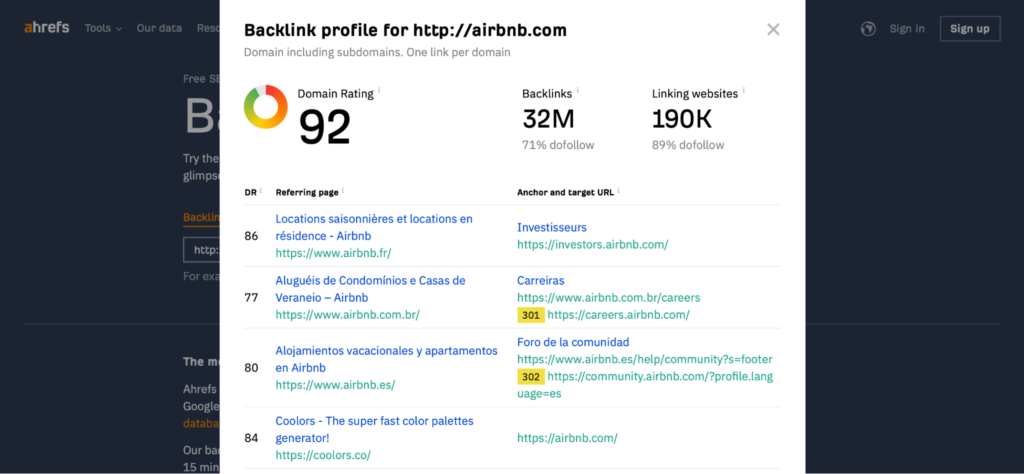
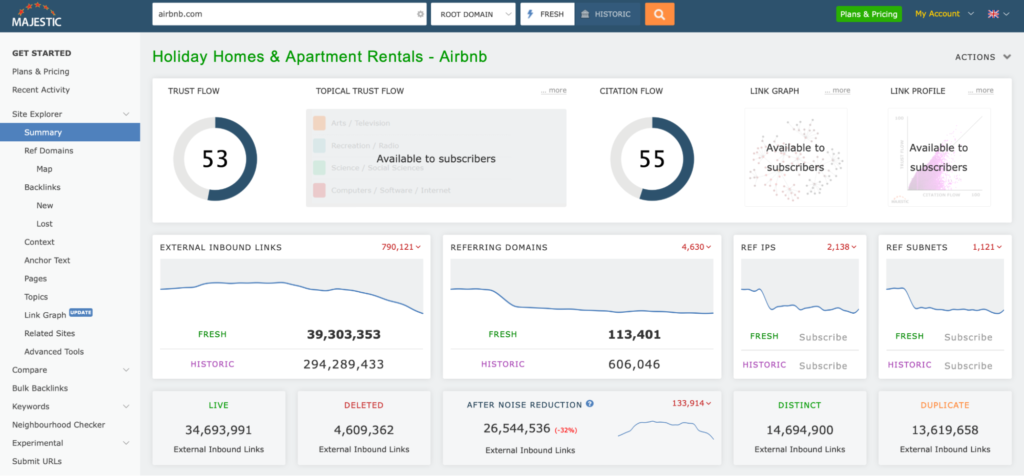
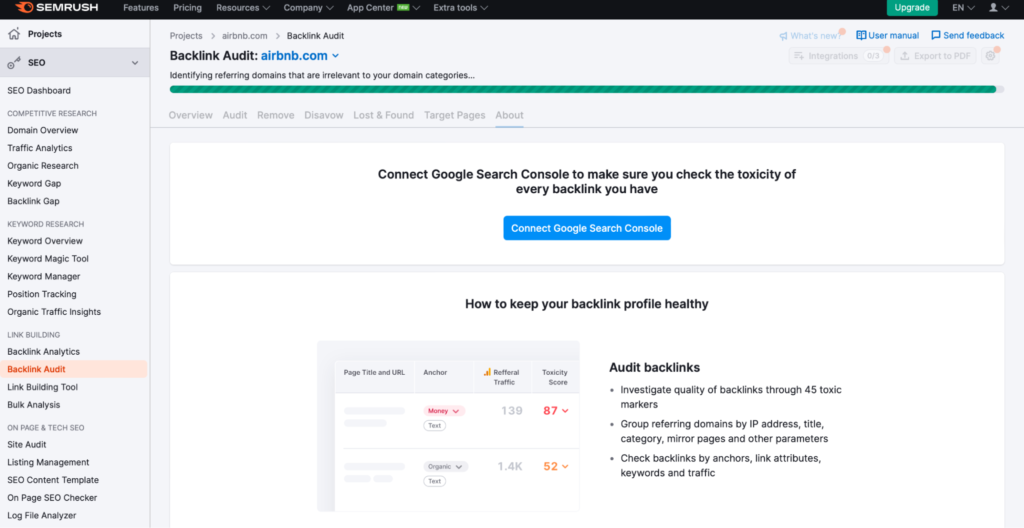
Pro tip – Make sure you have a pro version to avail maximum benefits and features of the SEMRush tool. Also, you can connect to the Google Search Console.
Step 3: Analyzing backlink types
Categorize the types of backlinks your site has, including natural links, paid links, reciprocal links, etc. Understanding the mix of link types is crucial as it affects how search engines perceive your backlink profile.
Healthy backlinks come from trustworthy sites and are contextually relevant, boosting site authority. Harmful backlinks or unnatural links might originate from spammy directories and can attract search engine penalties.
Step 4: Assess the Value of Each Backlink
Analyze backlinks for the authority of linking domains. High-authority domains are trusted by search engines and pass beneficial ranking signals. Apart from SEMRush, you can also use Moz’s toolbar for this purpose.
Remember, the context and placement of backlinks on a page are pivotal. Contextually relevant and prominently placed backlinks are more valuable.
Don’t forget to check other relevant metrics as well.
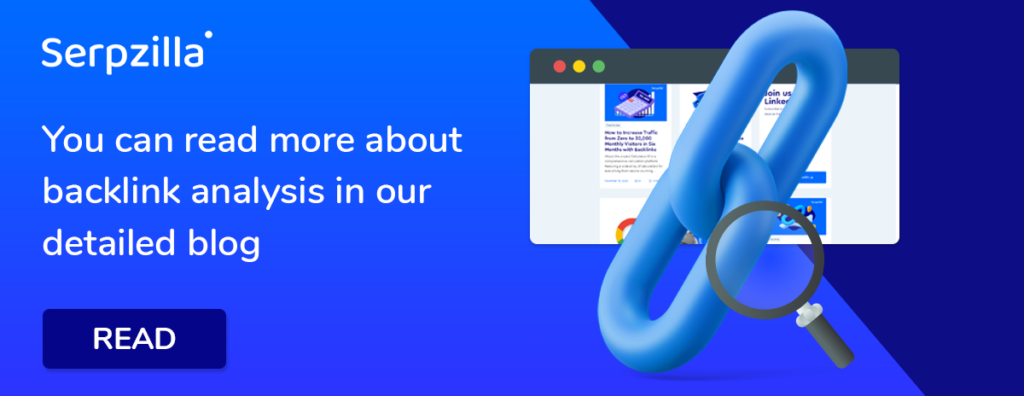
Step 5: Identify potentially toxic backlinks
Spotting Red Flags: Identify toxic backlinks from suspicious or spammy sites, looking for signals like over-optimized anchor text or links from penalized sites.
Tools for Detection: Use tools like Ahrefs’ “Site Explorer” or SEMrush’s “Backlink Audit Tool” to filter and categorize links with red flags. These tools use algorithms to assess risk levels.
Step 6: Conduct competitor Backlink Analysis
Comparing Backlink Profiles: Analyze competitors’ backlink profiles to understand their link-building strategies and identify gaps in your own.
Gaining Insights: Use insights to refine your backlink strategy. Identify opportunities for outreach and patterns in content that earns backlinks.
Designed to offer insightful and relevant data, SEMRush empowers users to gain a competitive edge by thoroughly understanding their competitors’ backlink profiles. With just a competitor’s domain, this tool provides a detailed breakdown of the types of backlinks, their sources, and the anchor text used. This comprehensive overview enables users to accurately evaluate the quality and context of their competitors’ links.
Step 7: Focus on backlink gap
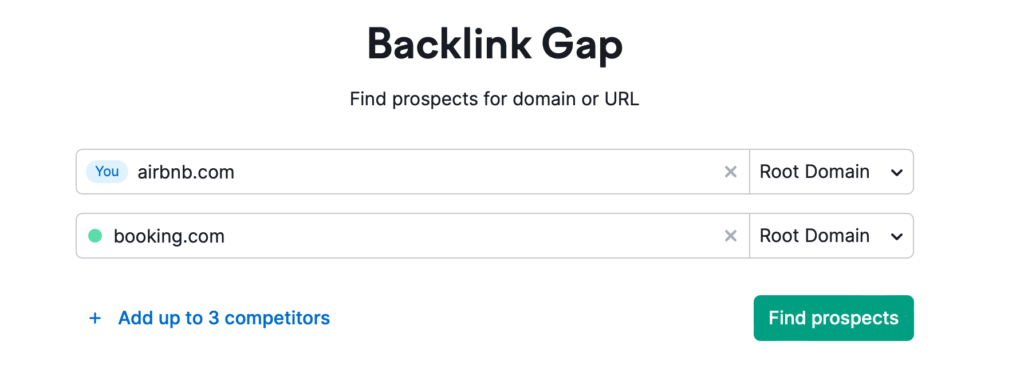
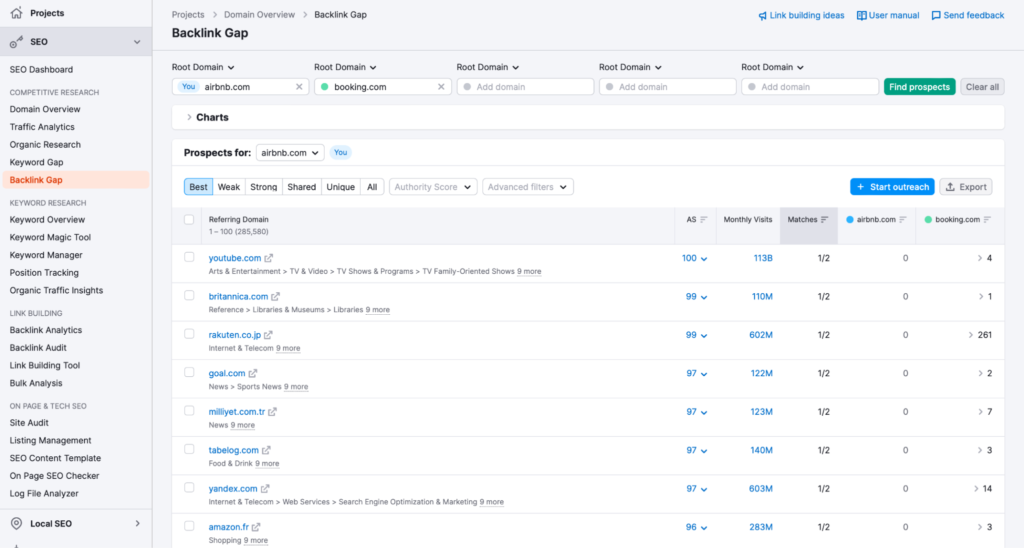
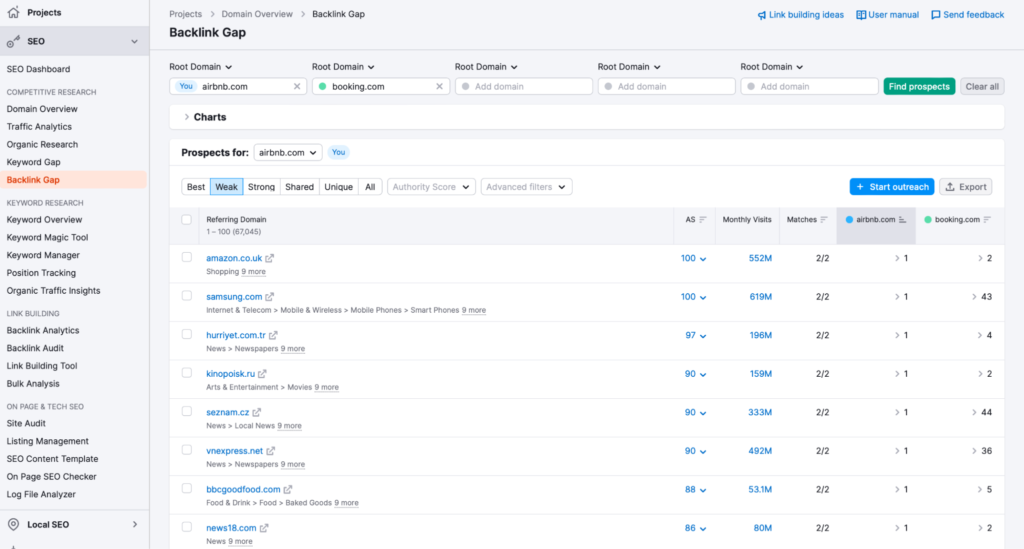
Semrush’s Backlink Gap tool emerges as a vital asset for digital marketers aiming to enhance their link-building strategies. It goes beyond a mere analysis, offering users a chance to benchmark their website’s backlink profile against up to five competitors. This personalized approach unlocks essential insights, providing a roadmap to strengthen online visibility.
At its core, the Backlink Gap tool quantifies the gaps in a user’s backlink profile by comparing it to competitors. It identifies domains linking to competitors but not the user’s site, unveiling untapped opportunities for strategic backlink acquisition. This unique functionality adds a human touch to the process, making it more intuitive and actionable.
What distinguishes this tool is its customization prowess. Users can apply filters to tailor the analysis, focusing on specific link types, platforms, or time frames. This fine-tuned approach offers a nuanced understanding of the competitive backlink landscape, empowering users to make more informed decisions.
Beyond revealing gaps, the Backlink Gap tool also provides actionable insights that users can seamlessly integrate into their link-building strategy. This personalized feature transforms competitive analysis into a dynamic roadmap for strategic planning, optimizing resource allocation, and maintaining vigilance in the ever-evolving digital terrain. It humanizes the process, ensuring a more intuitive and efficient approach for digital marketers.

Step 8: Prepare for link removal or disavowal
So, what happens when you detect harmful backlinks? You need to prepare for removing the link and disavowal.
Preparing for link removal or disavowal is like tidying up your digital space – it’s about maintaining a clean and reputable online presence. Just as you declutter your living space for a fresh start, cleaning up your backlink profile is crucial for a healthy website.
Start by conducting a thorough backlink audit. Think of it as an investigative process – carefully examine each link pointing to your site. Identify the ones that may be harmful or irrelevant, akin to sorting through belongings and deciding what no longer serves a purpose.
Once you’ve identified these links, reaching out for removal is the next step. It’s a bit like having a conversation – politely ask the webmasters to remove the links, explaining the reasons behind your request. It’s all about fostering positive online relationships.
However, not every link can be removed, and that’s where disavowal comes in. Consider it as setting boundaries – let search engines know which links you disapprove of to protect your website’s integrity. It’s a proactive step to ensure your digital space reflects the quality and relevance you aim to provide.
Step 9: Plan a backlink acquisition strategy
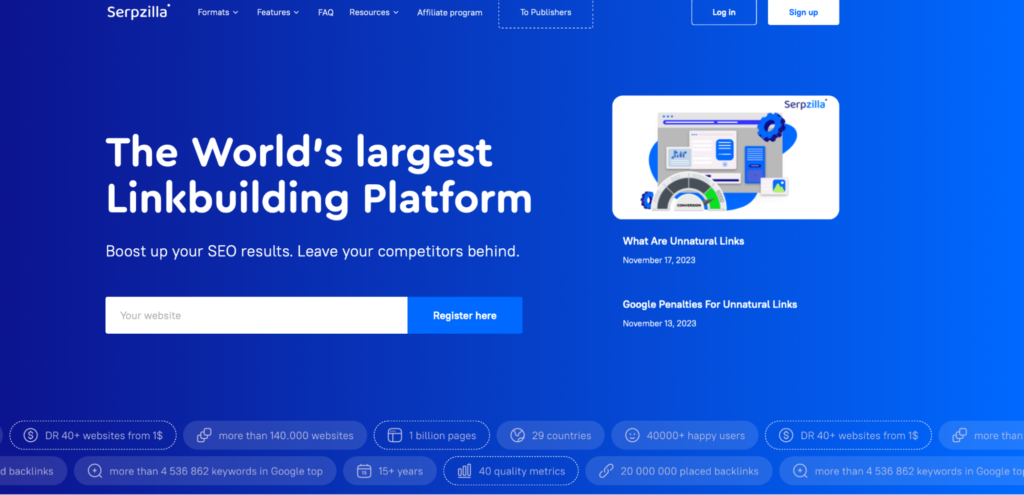
After cleaning up your backlink profile, devise a plan to acquire new, high-quality backlinks that add value to your website.Using tools like Serpzilla can come to your rescue here.
For instance, in Serpzilla the links stand out for their exceptional contextuality, independent of the originating page. They operate similarly to native advertising, allowing you to choose the on-page location, whether within the content, sidebar, footer, and more. Typically considered as prime real estate, links within these blocks are often regarded as “rental” links, obtainable through Serpzilla’s niche edits feature.
In addition, keep exploring avenues like guest blogging, broken link building, and co-marketing for new backlinks. Leverage relationships and create shareable content.
Step 10: Continuously monitor
The continuous analysis of backlinks is a fundamental aspect of effective backlink management, underscoring that a backlink audit is not a one-time occurrence but an ongoing process. Consistent monitoring is crucial to guarantee that a website’s backlink profile remains not only clean but also adaptable to the changing dynamics of the online environment. This is analogous to regularly maintaining and optimizing a physical space to ensure it remains well-organized and functional over time.
To streamline this ongoing process, establishing alerts is pivotal. Utilizing tools that promptly inform you of new backlinks facilitates prompt assessments and timely responses. This proactive method is similar to having a vigilant security system in your digital space, alerting you to potential issues as soon as they emerge. It empowers website owners and digital marketers to stay proactive, particularly given the continuously evolving algorithms of search engines.
The integration of continuous analysis and alert systems enables website owners to proactively oversee their backlink profiles. This strategy ensures the prompt identification and resolution of undesirable or harmful backlinks, contributing to the overall health and efficacy of the website’s online presence. It represents a dynamic approach that aligns with the perpetually changing nature of search engine algorithms and the digital landscape.
Boost your SEO results! Link building has become fast and easy with Serpzilla. Buy quality backlinks on authority websites with high DR.
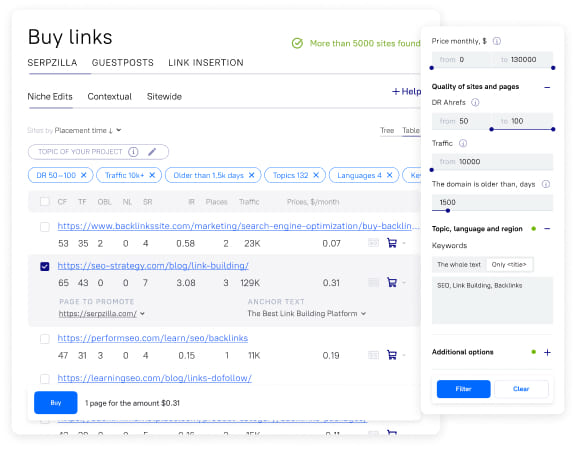
Summary and next steps
To summarize, when you get the results of the backlink audit, it’s crucial to highlight key insights gleaned from each step of the process.These findings will help in shaping the overall health and performance of your website’s SEO.
After the audit, provide actionable recommendations to address the identified issues. Outline a timeline for implementing changes, prioritize the links that require immediate attention, and set clear goals for acquiring new, quality backlinks. This roadmap ensures a systematic and effective response to the audit’s insights.
Next, create a detailed document that includes the findings of the audit and the specific actions taken. This documentation serves as a valuable resource for future audits and allows for the measurement of the impact of implemented changes over time.
Don’t forget to illustrate the importance of visual aids in the documentation process. Include an example of a well-structured document or a screenshot showcasing the final audit report with annotations. Visual representations can enhance clarity and facilitate better communication of complex information.




